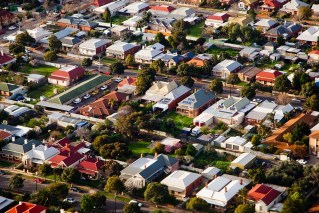Super, pay and pensions: 10 major changes set to start in July


There are a lot of changes to get your head around this financial year. Photo: Getty
There’s always a lot of focus on the end of financial year, but the beginning of the new one often brings changes that can significantly affect your life and finances.
This July 1 sees a range of new minimum pay, income thresholds and eligibility criteria begin.
Read on to find out more about 10 of the biggest changes coming in the 2023-24 financial year.
Super contributions rise
The super guarantee will increase to 11 per cent as part of an annual 0.5 per cent rise to reach 12 per cent in 2025.
This means, on top of paying a regular salary, employers will be required to make a contribution amounting to a minimum of 11 per cent of a worker’s earnings towards their nominated superannuation fund.
While this change might amount to just a few extra dollars per week going into your super account, it could add up to tens of thousands of dollars extra over the years for your retirement, especially when accrued interest is taken into account.
Workers are being urged to check their payslips and super accounts to make sure employers are applying the increase to minimum contributions from July 1.
Pay rises
Australia’s lowest-paid workers – those on minimum or award wages – get a pay increase.
The national minimum wage will increase 8.6 per cent to $23.23 per hour; minimum award pay rates will also increase by 5.75 per cent.

Those on minimum and award wages will see higher figures on their payslips. Photo: Getty
The change to the minimum wage means the country’s lowest paid workers will now earn nearly $3 more per hour than two years ago.
Only 0.7 per cent of Australians earn the national minimum wage, while more than one in five Australian workers are paid minimum award rates.
Age pension eligibility
Australians will have to wait longer to receive the age pension.
From July 1, you must be 67 years old (born on or after January 1,1957) to be eligible for the age pension.
The age of eligibility for this pension has been steadily rising by six months every two years since 2017 to reach 67 this year.
So far, there are no plans to continue raising the age.
End of lower pension drawdown rates
Pension drawdown rates are the minimum portion of a pension account that pensioners are required to withdraw each year.
The exact minimum percentage of pension that must be withdrawn varies depending on age.
The government temporarily halved minimum pension drawdown rates for the 2019-20 through to 2022-23 financial years, which led to retirees collectively saving up billions of dollars – a move which means they end up paying their super fund more for looking after their money.
For the 2023-24 financial year, the 50 per cent reduction in the minimum pension drawdown rate will no longer apply.
More flexible paid parental leave
The current entitlement to 18 weeks’ paid parental leave pay will be combined with the current Dad and Partner Pay entitlement to two weeks’ pay.
This means partnered couples will be able to claim up to 20 weeks’ paid parental leave between them; each partner must take at least two weeks leave, either separately or at the same time, although some exceptions may apply.
Parents who are single at the time of their claim can access the full 20 weeks.

Parental leave for both parents will be combined. Photo: Getty
The whole payment is now flexible, so eligible workers can claim it in multiple blocks until the child turns two, and the requirement to return to work to be eligible for the entitlement has been removed.
A family income limit of $350,000 for claiming paid parental leave pay has also been introduced, and will be indexed annually from July 1, 2024.
These changes affect workers whose babies are born or placed in their care on or after July 1, 2023.
Child care subsidy increased
From July 10, if your family earns under $530,000, you’ll get an increased Child Care Subsidy (CCS).
Families earning up to $80,000 will get an increased maximum CCS amount, from 85 per cent to 90 per cent.
If you earn over $80,000, you may get a subsidy starting from 90 per cent; this will go down by 1 per cent for each $5000 of income your family earns.
If you have more than one child aged five or under, you can still get a higher rate for one or more of your children, and the low-income limit for the additional childcare subsidy transition to work will also increase to $80,000.
Unfortunately, many families may have to pay more for child care as childcare centres raise fees.
Eligibility changes for home-buying schemes
In an attempt to address the housing affordability crisis, eligibility criteria for the first home and regional schemes mean permanent residents will be eligible to apply.
Previously, the schemes were only available to married couples, single people, and people in de facto relationships who had never owned a home.
From July 1, friends, siblings and other family members will be able to jointly apply for the First Home Guarantee and Regional First Home Guarantee, as will non-first home buyers who have not owned a property in the past 10 years.
There are 35,000 new places in the First Home Guarantee and 10,000 places in the Regional First Home Buyer Guarantee available.
Energy bills increase
From July 1, residential electricity customers on standard retail plans in New South Wales, South Australia, Victoria, and south-east Queensland will see price increases up to 24.9 per cent, depending on their region.
Small business customers in these states are facing increases up to 28.9 per cent, also depending on their region.
At the same time, households will receive some energy bill relief as part of a partnership between the federal government and state and territory governments:
- New South Wales, South Australia and Tasmania: $500 per eligible household
- Victoria: $250 per household, plus a one-off $250 direct payment through Victoria’s 2023 Power Saving Bonus Payment
- Northern Territory: $350 per eligible household
- Queensland: Current recipients of Queensland’s Electricity Rebate will receive $700. All Queensland households will receive $550 through the new cost of living rebate
- Western Australia: Current rebate recipients will receive $500 (in addition to the existing rebate) and all other households will receive $400
- Australian Capital Territory: $175 per eligible household. The territory’s large-scale, feed-in tariff scheme will also lower the average bill by $152.
Small businesses in some states are also eligible for energy bill relief.
Increase to Medicare levy surcharge threshold
The Medicare levy surcharge (MLS) is an additional tax on your income that you need to pay if your income is above a certain level and you don’t have private health insurance hospital cover.
The income threshold will rise from $90,000 to $93,000 for single people, and to $186,000 from $180,000 for a family.
People earning up to these new income thresholds are exempt from paying the MLS if they don’t have private health cover.
The family income threshold increased by $1500 for each MLS dependent child after the first child.
This year marks the first time in eight years the income threshold will rise.
Queensland rental reform
Rental affordability and availability are acute problems in Queensland, but changes may give renters some peace of mind.
From July 1, landlords will only be able to increase a tenant’s rent once every 12 months, up from six months.
From September 1, minimum housing standards will come into effect for new tenancies.
The standards will aim to ensure all Queensland rental properties are safe, secure and functional, and include stipulations such as all rental properties must be weatherproof and structurally sound, have a functioning cooktop if a kitchen is provided, and be free from vermin, damp and mould except in circumstances where these have been caused by a tenant.

















